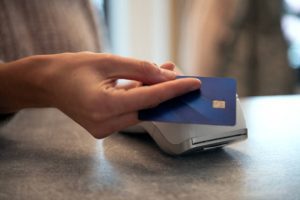Introduction to NFC Business Cards
The world of professional networking has undergone a remarkable transformation with the introduction of Near Field Communication business cards. These innovative tools represent a significant leap forward from traditional paper cards, combining cutting-edge technology with the timeless need for professional connection. NFC business cards are revolutionizing how we share contact information, making the process faster, more reliable, and environmentally sustainable.
At their core, NFC business card are small, smart devices that can instantly transfer your contact information to any smartphone or NFC-enabled device with a simple tap. This technology eliminates the need for manual data entry, reduces the chance of lost information, and creates a seamless networking experience that leaves a lasting impression on potential clients and business partners.
Understanding NFC Technology Fundamentals
Near Field Communication is a specialized subset of Radio Frequency Identification technology that operates at a frequency of 13.56 MHz. The fundamental principle behind NFC involves electromagnetic induction between two devices when they come within close proximity, typically within 4 centimeters of each other. This short-range communication protocol ensures both security and intentional interaction, as users must deliberately bring devices close together to initiate data transfer.
The technology works through electromagnetic fields that create a connection between an NFC chip and an NFC-enabled device. When two NFC devices approach each other, they form a peer-to-peer network that allows for bidirectional communication. However, in the case of NFC business cards, the communication is typically unidirectional, with the card acting as a passive device that transmits stored information to an active device like a smartphone.
The beauty of NFC technology lies in its simplicity and universality. Unlike Bluetooth or WiFi connections that require pairing processes or password authentication, NFC creates an instant connection that requires no setup or configuration from the user’s perspective. This seamless interaction makes it perfect for business networking scenarios where quick, efficient information exchange is crucial.
How NFC Business Cards Actually Work
When you tap an NFC business card against a smartphone, several processes occur almost instantaneously. The smartphone’s NFC antenna generates a magnetic field that powers the passive NFC chip embedded in the business card. This energy transfer is sufficient to activate the chip and enable it to transmit its stored data back to the phone.
The NFC chip contains a small microprocessor and memory storage that holds your contact information in a standardized format called NDEF, which stands for NFC Data Exchange Format. This format ensures compatibility across different devices and operating systems, allowing your information to be read by virtually any NFC-enabled smartphone, regardless of whether it runs Android or iOS.
Once the data transfer begins, the information travels from the business card’s chip to the smartphone’s NFC controller, which then processes the data and presents it to the user through the phone’s operating system. Modern smartphones automatically recognize contact information and offer to save it directly to the phone’s contact list, eliminating the need for manual typing or potential transcription errors.
The Technical Components Inside
An NFC business card contains several sophisticated technical components working together in a remarkably small space. The primary component is the NFC chip itself, typically measuring just a few millimeters square. These chips are manufactured by companies like NXP Semiconductors, Broadcom, and Qualcomm, and they contain both processing capabilities and non-volatile memory storage.
The antenna is another crucial component, usually consisting of a copper wire coil printed directly onto the card’s substrate. This antenna serves the dual purpose of receiving energy from the reader device and transmitting the stored data back. The design and positioning of this antenna are critical factors that determine the card’s reading range and reliability.
The memory capacity of NFC business cards typically ranges from 96 bytes to 8KB, depending on the specific chip model used. While this might seem limited compared to modern storage standards, it’s more than sufficient for storing comprehensive contact information, including name, phone numbers, email addresses, website URLs, and even social media profiles.
Data Storage and Transfer Process
The data storage process on NFC business cards involves encoding information into the NDEF format, which creates a structured way to store different types of data. Contact information is typically stored as a vCard format, an industry-standard electronic business card format that’s universally recognized by smartphones and contact management applications.
When programming an NFC business card, the data is written to the chip’s EEPROM memory, which retains information even when no power is supplied. This non-volatile storage ensures that your contact information remains accessible for years without requiring any maintenance or battery replacement.
The transfer speed of NFC technology is approximately 424 kilobits per second, which means that typical contact information transfers in milliseconds. This rapid transfer rate ensures that the user experience feels instantaneous, contributing to the impressive nature of the technology when demonstrated to potential clients or networking contacts.
Compatibility and Device Requirements
One of the greatest strengths of NFC business cards is their broad compatibility with modern smartphones. Nearly all Android devices manufactured since 2012 include NFC capabilities as standard features, while Apple introduced NFC reading capabilities to iPhones starting with the iPhone 7 and iOS 11. This widespread adoption means that the vast majority of smartphones in use today can interact with NFC business cards.
For optimal compatibility, NFC business cards typically use the ISO 14443 Type A standard, which is the most widely supported NFC protocol across different devices and manufacturers. This standardization ensures that your business card will work consistently across various smartphone brands and operating systems.
However, it’s worth noting that some older smartphones and basic phones may not have NFC capabilities. In such cases, many NFC business card providers also include QR codes as a backup method for sharing contact information, ensuring that no potential connection is lost due to technology limitations.
Security Features and Protocols
Security is a fundamental aspect of NFC technology, built into the protocol at multiple levels. The short communication range of NFC provides inherent security by requiring physical proximity for data transfer, making unauthorized access extremely difficult without the cardholder’s knowledge.
NFC business cards can implement various security features, including password protection for data modification and encryption for sensitive information storage. Some advanced cards support secure elements that provide hardware-level security for storing and processing confidential data.
Additionally, the passive nature of most NFC business cards means they cannot initiate communication independently, reducing the risk of unauthorized data transmission. The data stored on these cards is typically read-only for the end user, preventing accidental modification or deletion of contact information.
Advantages Over Traditional Business Cards
The advantages of NFC business cards extend far beyond their technological novelty. From a practical standpoint, they eliminate the common problem of lost or damaged paper cards, as the recipient’s contact information is immediately saved to their smartphone. This digital storage ensures that your contact details remain accessible and searchable within the recipient’s existing contact management system.
Environmental considerations also play a significant role in the appeal of NFC business cards. A single NFC card can replace thousands of paper business cards throughout its lifetime, significantly reducing paper waste and printing costs. This sustainability aspect resonates particularly well with environmentally conscious businesses and individuals.
The professional impression created by NFC business cards cannot be understated. The seamless technology demonstration often serves as an excellent conversation starter and immediately positions the cardholder as tech-savvy and forward-thinking. This positive first impression can be invaluable in business relationships and networking scenarios.

Future of NFC Business Card Technology
The future of NFC business card technology looks increasingly promising, with several emerging trends and improvements on the horizon. Enhanced memory capacities will allow for more comprehensive information storage, potentially including multimedia content like photos, videos, or audio introductions.
Integration with social media platforms and professional networks is becoming more sophisticated, allowing NFC business cards to automatically connect recipients to LinkedIn profiles, company pages, or portfolio websites. Some advanced implementations are beginning to include analytics features that track when and how often cards are scanned, providing valuable insights into networking effectiveness.
The development of more advanced materials and manufacturing techniques is also driving innovation in NFC business card design. From metal cards with embedded chips to flexible displays that can show dynamic information, the physical form factor of these cards continues to evolve while maintaining the core NFC functionality that makes them so effective.
Frequently Asked Questions
What happens if someone doesn’t have an NFC-enabled phone? Most NFC business cards include a backup QR code that can be scanned by any smartphone camera. This ensures compatibility with older devices and provides a fallback option for data sharing.
How long do NFC business cards last? Quality NFC business cards can function reliably for 5-10 years or more. The NFC chips are designed for durability and can withstand normal handling, temperature variations, and even light water exposure.
Can I update the information on my NFC business card? This depends on the type of card you purchase. Some NFC business cards allow information updates through smartphone apps, while others have fixed data that cannot be changed after initial programming.
Are NFC business cards expensive? While the initial cost is higher than paper cards, NFC business cards become cost-effective over time since they can be used repeatedly. Prices typically range from $15-50 per card, depending on features and customization options.
Do NFC business cards work with iPhones? Yes, iPhones from iPhone 7 onwards can read Digital Business Cards automatically when the phone is unlocked and the card is tapped against the top of the device.
Can NFC business cards be hacked or pose security risks? The risk is minimal due to the short communication range and read-only nature of most business cards. However, users should be cautious about cards from unknown sources and avoid storing sensitive information beyond basic contact details.


